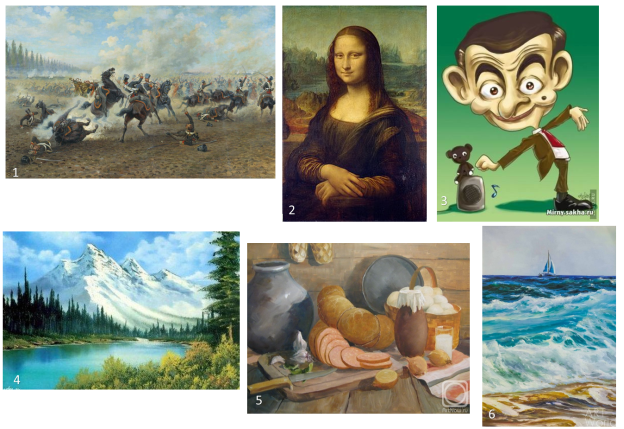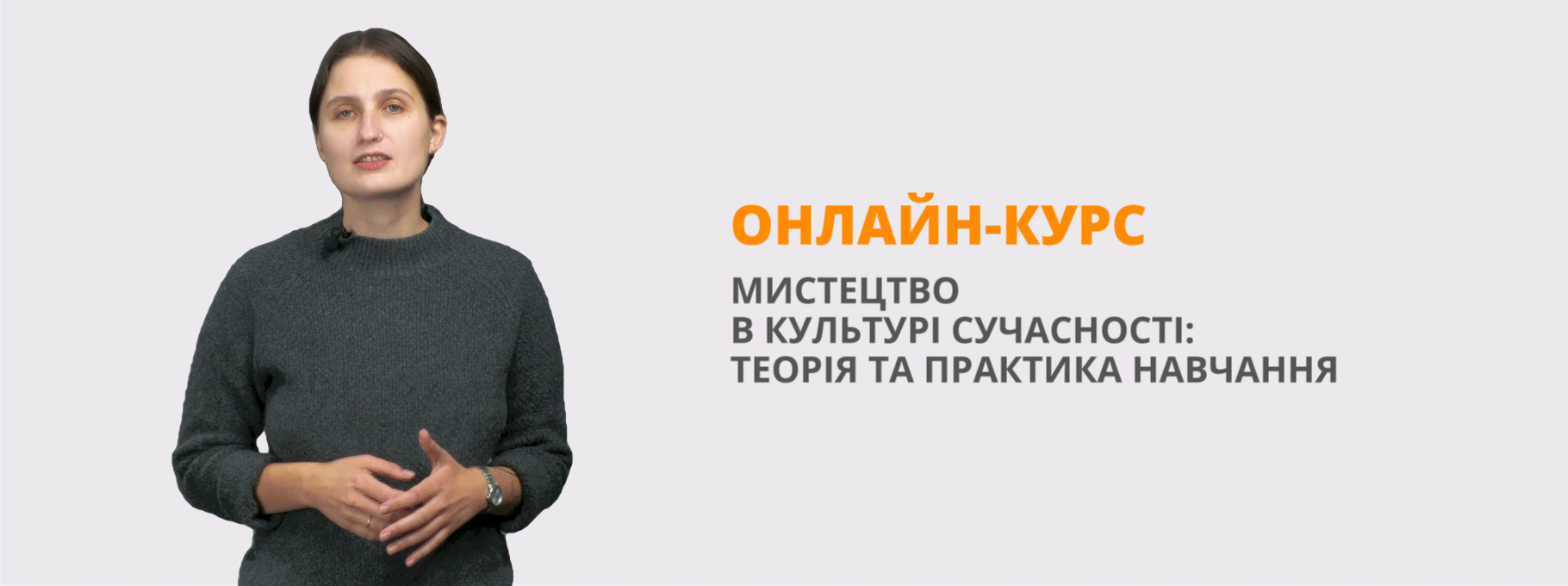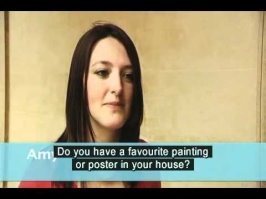Інтегрований урок англійської мови "Живопис" у 10 класі за підручником Карпюк
Розробка уроку в 10 класі
вчителя-методиста англійської мови КЗШ№79 м. Кривого Рогу
Іголкіної Людмили Миколаївни
Тема уроку: Стилі живопису
Мета: навчати учнів нових лексичних одиниць теми та практикувати у їх вживанні; удосконалювати навички усного ( монологічного та діалогічного) мовлення; розвивати навички аудіювання та читання; збагачувати кругозір учнів про захоплюючий світ мистецтва та живопису; виховувати культуру спілкування та розуміння високої цінності художнього мистецтва, вміння висловлювати свої враження від творів мистецтва.
Обладнання: мультимедійна презентація, роздавальний матеріал для роботи в групах (тексти для читання, діалоги), відеоматеріали, плакати.
Тип уроку: інтегрований урок з англійської мови та художньої культури.
Хід уроку
- Introduction
- Greeting and aim
T: Read and express your opinions on the quotation:
( на екрані тема уроку « Painting» , цитата )
“Painting is poetry that is seen rather than felt, and poetry is painting that is felt rather than seen”.
Leonardo da Vinci
T: Today we are going to have an unusual lesson because the topic of our lesson is art. Who can be indifferent to art? Only those who know nothing about it, who have never seen a piece of art!
By the end of the lesson you will be able to:
- discuss paintings;
- practice grammar skills;
- reinforce vocabulary related to the topic;
- develop retelling skills;
- describe your emotions;
- know more about painting trends and genres.
- Warm-up
T: Read the rhyme “On Painting”. Comment on the message the rhyme is conveying.
Life is like a piece of art,
It requires lots of heart.
Choose your paint and your brush,
Take your time avoid the rush.
Before your paint, choose your theme.
Do not be afraid, to follow your dream.
It is all right, to make a mistake.
Your painting is real, it is not fake.
Look at your painting, do not be crying,
Begin again, keep on trying.
Your painting is never fully complete,
Enjoy the process, make sure it’s sweet.
- The Main Part of the Lesson
- A Conversation
T: What is the difference between a drawing and a painting?
- What is your favourite painting?
- Who is your favourite painter/artist?
- Name some of the painters you know.
- Name the art styles you know.
T: Let me help you do it! Watch the presentation about the art styles and be ready to answer the questions of your teacher of Art
(presentation) (Учні переглядають презентацію)
- What is your favourite art style?
- What art style don’t you like? Why?
- Can you name the pictures shown in this presentation?
- Do you agree that…
… art is indeed a great power, especially if it appeals to the heart and mind of a man, to his feelings and ideals and if it proclaims life?
…art is truthful only when it serves life, only when the artist hopes to arouse a warm response in the heart of a man?
T: What makes people create works of art?
(You can use the scheme to answer this question)
|
The painter’s goal is
|
to view the life philosophically to pay attention to something to raise the problems of the morals to create a gallery of (satirical) portraits to assert(відстоювати) the spiritual beauty of a man to show his/her personal observations (emotions, feelings) to present his/her personal vision of something |
- Speaking on the genres of painting.
T: What genres of painting do you know?
Remember from your Art Culture lessons.
(Читають учні)
- a portrait a cityscape
- a still life a battle picture
- a landscape a caricature
- a seascape (marine)
T: Look at the pictures 1-6 and define their genres:

T: Match the parts of the sentences. Key: 1c, 2a, 3f, 4b, 5e, 6d.
|
|
|
T: Now watch these pieces of art and name their genres:
(4 pictures)
3. Practicing Vocabulary
- Presenting Vocabulary
T: Look through the list of new expressions:
The Impressions of a Picture
|
+ |
- |
|
|
|
The painter portraitist |
depicts describes portrays reflects |
a group of people a beautiful woman a ship in the waves of the sea an internal psychological and social drama |
- Group Work
Oral Practice
T: Look at the paintings and express your own impressions and feelings.
Each group has its own picture.
(4 pictures)
- Group Work
T: You are divided into four groups. Watch the video. It consists of four parts. Each group must be ready to talk on its part.
- And now a short time to relax!
T: Listen to the dialogue and dramatize it.
A: I don’t get art.
B: Or artists.
A: They’re in a different world.
B: I saw a painting of a jar that was full of pencils.
A: The artist said the jar was both full and empty.
B: But it was full of pencils! How could he say it was empty?
A: Artists see things differently.
B: Did you ever see anything that Picasso painted?
A: Of course! He’s world famous.
B: Did he ever take art lessons?
A: I can’t believe it. I drew paintings like that in third grade.
B: Where are they? Maybe they are worth millions.
- Reading
T: Read the text, choose the right word and answer the questions.
Impressionism
Impressionism is a style or movement in painting/literature originating in France in the 1860s, characterized by showing the visual impression of the moment, especially in terms of the shifting effect of light and sound/colour.
The impressionist painters denied both the precise academic style and the emotional concerns of Romanticism, and their interest in objective representation, especially of fresco/landscape, was influenced by early photography. Impressionism met at first with respect/scorn, but soon became highly influential. Its chief painters/composers included Monet, Renoir, Pissarro, Cezanne, and Degas.
- When did impressionism as a painting style appear?
- What country did it originate in?
- What is impressionism characterized by?
- What did the impressionist painters deny?
- Name some of the Impressionist painters.
- Summarizing
T: What have we discussed at today’s lesson?
Was this information interesting for you?
Have you learnt some new facts from Art Study unit?
- Homework
T: Learn new vocabulary.
Tell about the genres of painting.
Write down a short composition “The impressions of a picture”.


про публікацію авторської розробки
Додати розробку

